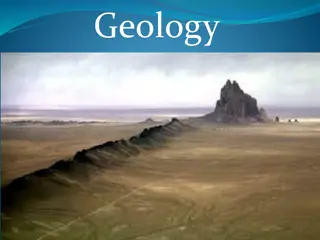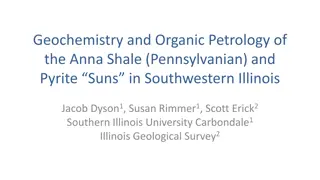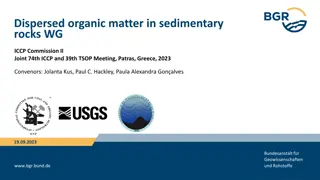
Common Igneous Rocks and Their Characteristics
Explore the most common igneous rocks like Granite, Granodiorite, Syenite, Diorite, Gabbro, Peridotite, Rhyolite, Trachyte, Andesite, and Basalt. Understand their mineral compositions and textures in this informative guide.
Download Presentation

Please find below an Image/Link to download the presentation.
The content on the website is provided AS IS for your information and personal use only. It may not be sold, licensed, or shared on other websites without obtaining consent from the author. If you encounter any issues during the download, it is possible that the publisher has removed the file from their server.
You are allowed to download the files provided on this website for personal or commercial use, subject to the condition that they are used lawfully. All files are the property of their respective owners.
The content on the website is provided AS IS for your information and personal use only. It may not be sold, licensed, or shared on other websites without obtaining consent from the author.
E N D
Presentation Transcript
Petrology (4)
DESCRIPTION OF THE MOST COMMON IGNEOUS ROCKS Granite A coarse-grained acid igneous rock with a granular texture. It essentially consists of quartz (>20%), k-feldspar (orthoclase or microcline), albite and biotite and/or muscovite. Granite is the plutonic equivalent of rhyolite. Granodiorite A plutonic acid igneous rock with a granular texture. Granodiorite is composed of quartz (>20%), oligoclase, orthoclase, biotite and hornblende. Granodiorite is the plutonic equivalent of dacite.
Syenite A coarse-grained intermediate igneous rock with a granular texture. Syenite consists of k-feldspar (orthoclase or microcline), oligoclase, and mafic minerals such as hornblende and less abundant biotite. Syenite is the plutonic equivalent of trachyte. Diorite Acoarse-grained intermediate igneous rock with a granular texture. It essentially consists of andesine, common hornblende, and biotite, augite, and k-feldspar may be present. Diorite is the plutonic equivalent of andesite.
Gabbro A coarse-grained basic igneous rock with a granular texture. It is composed of Ca-plagioclase (labradorite to bytownite), augite, with or without olivine, hornblende, hypersthene, biotite, and quartz may occur in accessory amounts. Gabbro is the plutonic equivalent of basalt. Peridotite A coarse-grained ultramafic rock with a granular texture. The rock consists of olivine and pyroxene with accessory chromite-spinel. The peridotite is classified into dunite, harzburgite, lherzolite and pyroxenite. Pyroxenite is a medium or coarse-grained basic or ultrabasic rock with a granular texture. It is essentially composed of pyroxene with minor olivine.
Rhyolite A fine-grained acid igneous rock with a porphyritic texture. The rock is composed of quartz, sanidine, albite and biotite. Rhyolite is the volcanic equivalent of granite. Trachyte A fine-grained intermediate igneous rock with a porphyritic texture. Trachyte is composed of sanidine, oligoclase, hornblende, biotite and aegirine-augite.
Andesite A fine-grained intermediate igneous rock with a porphyritic texture. It is composed of andesine, hornblende and pyroxene or biotite. Basalt A fine-grained basic igneous rock with a porphyritic texture. Some basalt may contain vesicular and amygdaloidal texture. The rock is composed of Ca-plagioclase (labradorite-bytownite), augite, with or without olivine. Basalt is the volcanic equivalent of gabbro.










